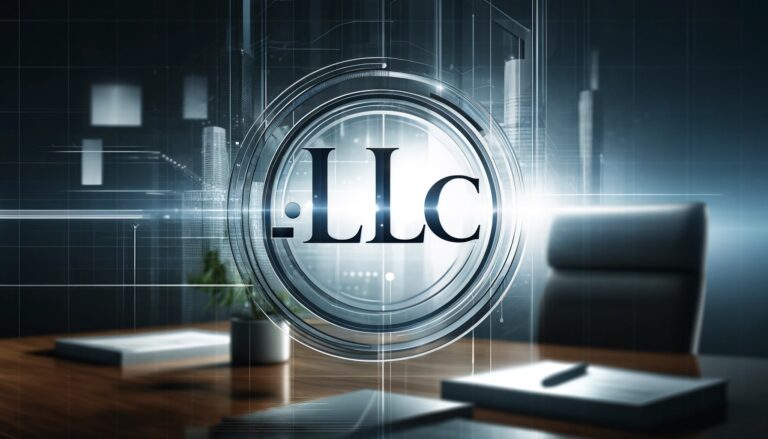The Shift in Language
The movement toward more inclusive language in technology mirrors a broader societal acknowledgment of the importance of diversity, equity, and inclusion. This shift is not merely a response to changing social norms but a proactive step by the tech community to create a more welcoming and respectful environment. As companies and open-source projects reevaluate the language used in their ecosystems, the implications extend beyond internal practices to influence the global tech culture. This process involves examining terms that have traditionally been used without consideration of their historical context or potential impact on underrepresented groups in tech.
In recent years, this introspective look at language use in technology has gained momentum, propelled by social movements and a growing recognition of the tech industry’s role in shaping societal values. Initiatives to replace terms with racist or exclusionary connotations are part of a larger effort to dismantle systemic biases within the industry. By changing the language, we signal a commitment to a more inclusive and equitable tech environment, acknowledging the power of words to exclude or include, to demean or respect.
Moreover, the dialogue around inclusive language has encouraged a more nuanced understanding of how language evolves and its impact on creating inclusive spaces. The tech community’s engagement with these issues reflects a broader willingness to confront uncomfortable truths, to listen to marginalized voices, and to take concrete actions that reflect the values of diversity and inclusivity. As this movement grows, it underscores the importance of continuous learning, adaptation, and the willingness to reexamine long-held practices.
Alternative Terms for “Master”
The journey to replace “master” in template naming is both a symbolic and practical embodiment of the tech community’s commitment to inclusivity. This section not only outlines alternatives but also delves into why each alternative might be more appropriate, considering the context and usage within projects.
- Primary: This term conveys the idea of being first or foremost without implying ownership or control. It’s suitable for scenarios where a template serves as the original source or main reference point.
- Default: Perfect for situations where a template is automatically selected in the absence of a user-defined option. It implies a standard or fallback position, free of hierarchical connotations.
- Main: Simple and direct, “main” suggests prominence and centrality, making it a strong candidate for primary template files that serve as the central hub or starting point in a project.
- Base: For templates that act as the foundation upon which others are built, “base” suggests a starting point or ground zero. It’s ideal for foundational templates that provide the basic structure for further customization.
- Root: Drawing from the botanical metaphor, “root” implies something that other elements grow from, suitable for templates that are at the core of a project’s structure or logic.
Each of these alternatives offers a way to describe relationships and hierarchies within projects without resorting to language with problematic historical implications. For example, transitioning from “master_template.html” to “base_template.html” not only removes the problematic term but also enhances clarity by more accurately describing the template’s role as the foundational element of other templates.
Incorporating these alternatives into naming conventions requires a thoughtful approach to ensure clarity and maintain project cohesion. When selecting a replacement term, consider the template’s role within your project and how the new terminology will resonate with contributors and users alike. The goal is to choose terms that are not only inclusive but also descriptive and intuitive, reducing barriers to understanding and participation in the project.
Implementing Changes in Your Project
The process of adopting more inclusive terminology in project templates goes beyond mere renaming; it encompasses a comprehensive strategy that involves stakeholder engagement, thorough planning, and consideration of the broader implications of language change. Engaging with project contributors, users, and the wider community early in the process is crucial for building consensus and ensuring a smooth transition. This engagement can take the form of discussions on project forums, surveys to gather input, and inclusive decision-making processes.
Technical considerations are paramount in this transition. This includes updating documentation, renaming files, and ensuring that changes do not break existing dependencies or workflows. Automation tools can play a crucial role in identifying instances of outdated terminology and facilitating bulk changes, while manual review ensures accuracy and consistency. Ensuring backward compatibility is also a key concern, particularly for projects with a wide user base or extensive ecosystem. Strategies such as providing aliases or dual support for old and new terms during a transition period can help mitigate potential disruptions.
Education and communication are equally important aspects of implementing language changes. Providing clear documentation of the reasons behind the change, the benefits of more inclusive language, and detailed guidance on the new terminology can help ease the transition for all involved. This might include updates to official documentation, blog posts, or webinars to discuss the changes and answer questions from the community.
Case Studies
Several high-profile case studies exemplify the tech industry’s commitment to inclusive language. GitHub’s shift from “master” to “main” for default branch naming is perhaps the most notable, serving as a catalyst for similar changes across the industry. This case study highlights the importance of leadership in driving change, the technical and communicative strategies employed to facilitate the transition, and the positive reception from the community.
Another example comes from the Python programming language, which has made concerted efforts to replace terms like “master/slave” with “parent/worker” or other alternatives in its documentation and code. This change, part of a broader effort to make the language and its community more welcoming, illustrates the collaborative nature of such initiatives, involving contributions from across the community to identify and update language.
These examples, among others, provide valuable lessons on navigating the complexities of language change in tech. They underscore the importance of clear rationale, community engagement, and thoughtful implementation strategies. By learning from these successes, other projects can approach their own language updates with greater confidence and effectiveness.
Tools and Resources
A variety of tools and resources have been developed to assist projects in transitioning to more inclusive language. Linters and code analysis tools, for instance, can automatically identify instances of terms targeted for replacement, streamlining the technical aspects of the transition. Open-source projects and community initiatives offer guides, best practices, and templates for drafting inclusive language policies, providing a framework for projects at any stage of the transition.
In addition to technical tools, educational resources are critical for supporting the cultural shift toward inclusivity. Workshops, online courses, and webinars focused on inclusive language in tech not only provide practical guidance but also foster a deeper understanding of the importance of language in creating inclusive spaces. These resources empower individuals and teams to advocate for and implement language changes within their projects and organizations.
Challenges and Solutions
Adopting inclusive language within tech projects is not without its challenges. Resistance to change, technical hurdles, and concerns about project continuity are common obstacles. Overcoming these challenges requires a multifaceted approach that includes open dialogue, education, and technical solutions. Engaging skeptics in constructive conversation, highlighting the positive impact of inclusive language on project inclusivity and diversity, and demonstrating successful implementations can help alleviate concerns.
Technical challenges, particularly around backward compatibility and workflow disruptions, necessitate careful planning and creative solutions. Employing aliases, providing detailed migration guides, and gradually phasing in changes can help minimize disruption. Additionally, leveraging community support and resources can provide valuable insights and strategies for navigating these technical challenges effectively.
Future of Inclusive Language in Technology
The future of inclusive language in technology looks promising, with ongoing efforts to refine and expand the adoption of inclusive terminology. The tech community’s proactive stance on this issue is a testament to its commitment to diversity, equity, and inclusion. As language evolves, so too will the strategies and tools available to support these changes, ensuring that the tech industry remains at the forefront of promoting inclusivity.
In the coming years, we can expect continued dialogue and innovation around language use in tech, driven by a shared recognition of its importance in fostering an inclusive and welcoming community. This ongoing evolution will likely involve not only the replacement of problematic terms but also a broader reevaluation of how language shapes our understanding of technology and its role in society. By staying informed, adaptable, and open to change, the tech community can continue to lead by example, demonstrating the power of language to create a more inclusive world.
Conclusion
Embracing inclusive language in technology, particularly through the adoption of alternative terms for “master” in template naming, signifies an important step towards building a more inclusive and respectful tech environment. This effort requires thoughtful consideration, community engagement, and a commitment to continuous improvement. By undertaking these changes, the tech community not only enhances the clarity and accessibility of its projects but also affirms its dedication to diversity, equity, and inclusivity. Through collective action and a willingness to evolve, the tech industry can continue to be a leader in promoting a more inclusive society.
FAQs
- Why is the shift to inclusive language in tech significant? The shift to inclusive language is significant because it reflects and promotes the values of diversity, equity, and inclusion within the tech community, contributing to a more welcoming environment for all.
- What are some key considerations when choosing alternative terms? Key considerations include the term’s relevance to the project context, its clarity and descriptiveness, and the potential for it to be universally understood and accepted by the project’s community.
- How can projects navigate potential resistance to language changes? Navigating resistance involves open communication, education on the importance of inclusive language, and sharing successful case studies to illustrate the positive impact of such changes.
- What role do tools and resources play in facilitating the transition to inclusive language? Tools and resources play a crucial role by automating the identification and replacement of outdated terms, providing guidelines for inclusive language, and offering educational materials to support the cultural shift.
- What does the future hold for inclusive language in technology? The future of inclusive language in technology is likely to involve ongoing efforts to identify and address exclusionary language, continuous engagement with emerging best practices, and a sustained commitment to inclusivity as a core value within the tech community.















